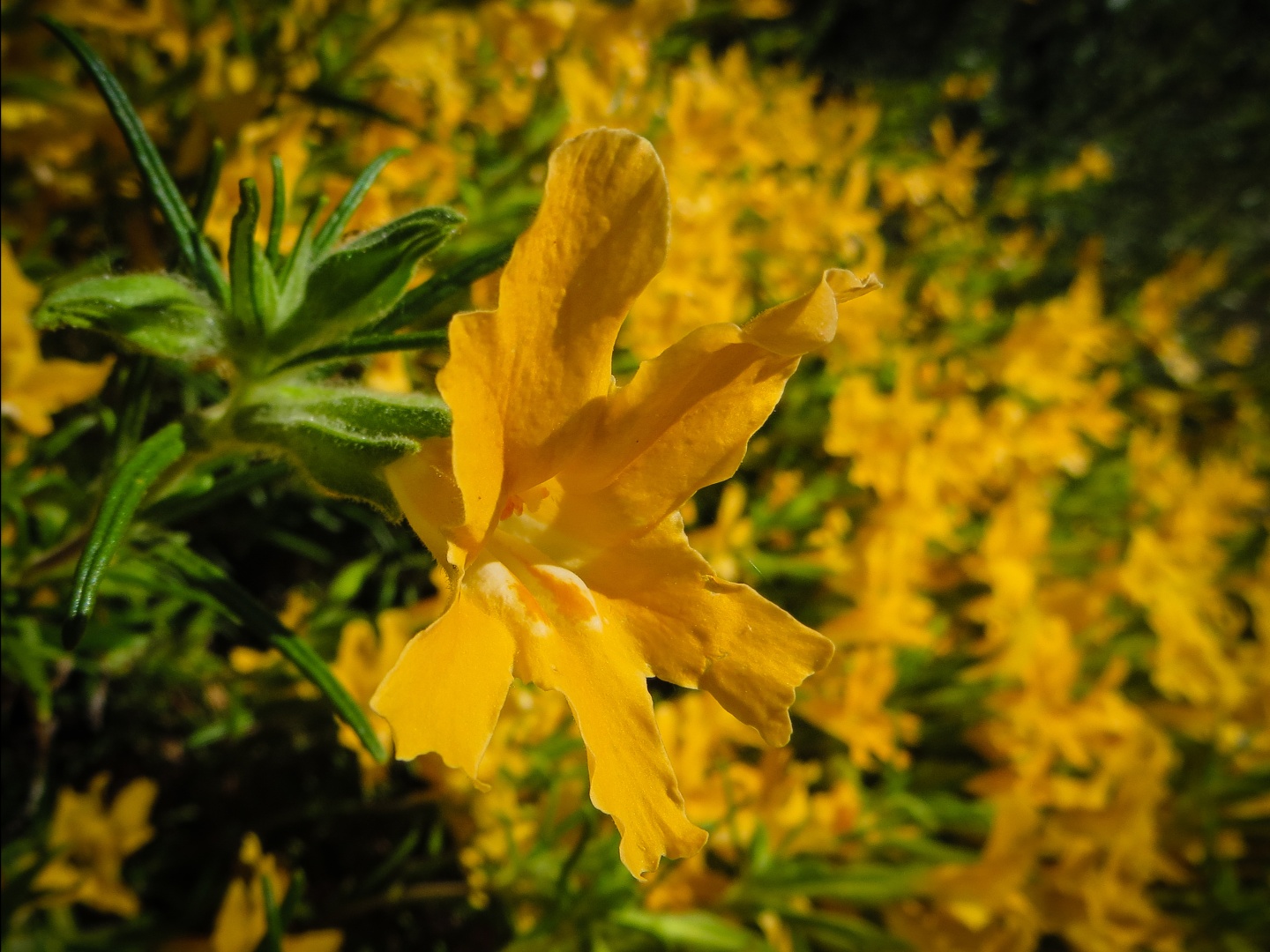Occasional observations on the wildflowers of 91011.
Monkeyflowers supposedly get their name from the blossom, because someone reportedly saw a resemblance to the face of a monkey with its tongue sticking out. Well, that may apply to a few species of monkeyflower — of which California is home to over ninety — but you’re under no obligation to agree!

In fact, monkeyflowers are a diverse lot. There used to be just one genus for them all, Mimulus (which, by the way, means “little mimic”), but they were recently divided into two more. Some monkeyflowers are bright, tiny annuals that disappear after they go to seed. Others are woody shrubs that stick around for many years. These are the so-called bush monkeyflowers, comprising six species that cover California’s coastal ranges and some inland foothills. In our area, as well as in all the surrounding hills and slopes, the real showstopper is Southern or “Hairy” Bush Monkeyflower (Diplacus longiflorus), which truly outshines almost every other native shrub.

In a decent rain year, our Bush Monkeyflowers can bloom so densely that it’s not easy to see if this shrub has any leaves at all! The blossoms are typically apricot or cantaloupe in color, but there are occasional variations. Sometimes an entire shrub will be a very pale yellow, verging on the color of cream. But sometimes the flowers will emerge with a reddish-rust complexion and gradually fade as they age. Bush Monkeyflowers are also sometimes called Sticky Monkeyflowers, because the flowers have tiny glands that lightly emit something like sap when touched. It’s possible that the stickiness may aid in pollination, assuming that it encourages pollinators to stick around a while.

Color variations seen on our local Bush Monkeyflowers
Where and when to find them. During their peak bloom in May and June, Bush Monkeyflowers are hard to miss. They’re common all over Cherry Canyon and on the south slopes of Mt. Lukens. They’re also found in many places around town, including on the open slopes where Highland Drive becomes Linda Vista Avenue, as well as along the Angeles Crest Highway. Bush Monkeyflowers are popular garden shrubs, but it can be difficult to find our exact local species. Nurseries more commonly sell Diplacus auranticus, Orange Bush Monkeyflower (more common on the central coast), which people like because it has been bred into varieties that bloom in dark red or even in a marigold-like color. But whichever species you plant, it’s sure to make your yard shine!
- For more about monkeyflowers in general, visit Wikipedia.
- For information about commercial varieties of Bush Monkeyflowers, visit Calscape.org.
- For distribution maps, taxonomy, and more photos, visit Calflora.org.
- You can also read (or subscribe to) other occasional notes on the wildflowers of 91011.

